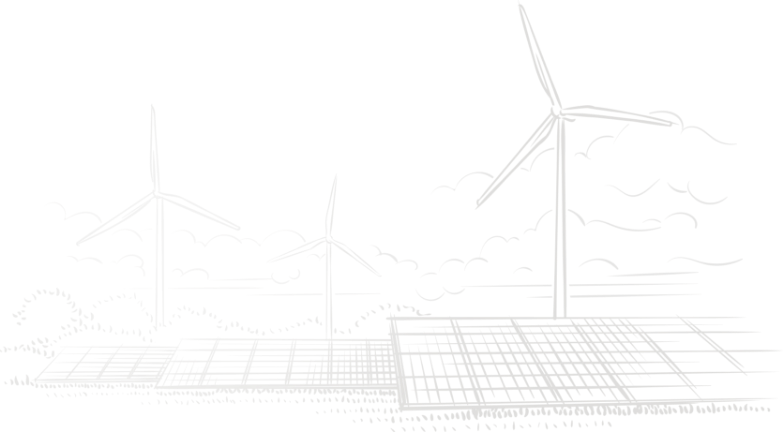With the continuous development of renewable energy, solar power generation systems have been widely used around the world. In these systems, the inverter plays a vital role. It is not only responsible for converting the direct current (DC) generated by solar panels into alternating current (AC) for use in homes or power grids, but also plays a key role in system efficiency, stability and safety. This article will take a deep look at the basic principles of inverters, technological advances and their importance in future energy systems.
1、The basic principle of inverter
The basic principle of the inverter is to convert the direct current generated by the solar panel into alternating current for use in the home or power grid. The direct current is switched into an alternating current waveform through the power electronic components (such as IGBT or MOSFET) inside the inverter, and the high-frequency harmonics are eliminated through the filter. The voltage and frequency are adjusted through the control circuit to ensure that the output alternating current is stable and reliable. The converted and regulated alternating current can be supplied to various electrical equipment or transmitted to the power grid.
This conversion process includes the following main steps:
1.1. DC input: Solar panels convert solar energy into DC power, which is transmitted to the inverter through cables.
1.2. Power conversion: Power electronic components (such as IGBT or MOSFET) are used inside the inverter to switch the direction of DC current to generate AC power. These switching elements switch at high speed to form the waveform of AC power.
1.3. Filtering and regulation: The generated AC power passes through the filter to eliminate high-frequency harmonics, and the voltage and frequency are adjusted through the control circuit to ensure that the output AC power meets the requirements of the power grid or equipment.
1.4. AC output: After conversion and regulation, the inverter outputs stable AC power, which can be directly used for household appliances or transmitted to the power grid.
- Advances in inverter technology
In recent years, inverter technology has made significant progress, with conversion efficiency increased from about 90% to more than 98%, greatly reducing energy losses and increasing the overall power generation of photovoltaic systems. In addition, the development of intelligent and digital inverters has enabled them to have functions such as real-time monitoring, remote control, self-diagnosis and fault warning, which has significantly improved the reliability and operation and maintenance efficiency of the system. At the same time, the optimization of maximum power point tracking (MPPT) technology ensures that the system can still operate at the highest efficiency under conditions of uneven lighting or shadows.
It is mainly reflected in the following aspects:
2.1. Improvement of conversion efficiency: The conversion efficiency of modern inverters has been increased from the traditional 90% to more than 98%. This means that more solar energy can be effectively utilized, reducing energy loss and increasing the overall power generation of the system.
2.2. Intelligence and digitalization: With the development of the Internet of Things and big data technology, inverters are gradually developing in the direction of intelligence and digitalization. Modern inverters can not only realize real-time monitoring and remote control, but also have self-diagnosis and fault warning functions, which greatly improves the reliability and operation and maintenance efficiency of the system.
2.3. Maximum power point tracking (MPPT) technology: MPPT technology is an important means to improve the efficiency of photovoltaic systems. The optimized MPPT algorithm can track the maximum power point of solar panels more accurately, and ensure that the system operates at the highest efficiency even in the case of shadows or uneven lighting.
2.4. Multifunctional integration: Modern inverters are not only limited to power conversion, but also integrate multiple functions such as energy storage management and reactive power control, and support connection with other equipment such as electric vehicle charging piles to form a comprehensive energy management platform.
- The Importance of Inverters in Future Energy Systems
Inverters will play a more important role in future energy systems. The following are several key directions for the future development of inverters:
3.1. Higher conversion efficiency and power density: With the application of new materials and new technologies, the conversion efficiency and power density of inverters will be further improved, the volume and weight will be reduced, and the installation and maintenance costs will also be reduced.
3.2. Smart grid and microgrid integration: Future inverters will be better integrated with smart grids and microgrids to achieve more flexible and efficient energy management. Inverters will be able to automatically adjust output according to grid demand, participate in grid peak regulation and frequency regulation, and improve the overall stability and reliability of the power system.
3.3. More diverse application scenarios: Inverters will play a greater role in distributed energy systems, smart cities, smart homes and other fields, support the coordinated use and optimized management of multiple energy forms, and promote the diversification and intelligent development of energy systems.
3.4. Sustainable development and environmental protection: Future inverter designs will pay more attention to environmental protection and sustainable development. By adopting more environmentally friendly materials and production processes, the manufacturing process of inverters will reduce the impact on the environment. In addition, the high efficiency and long life of inverters will help reduce the generation of electronic waste and promote the green development of the photovoltaic industry.
As the core component of the photovoltaic system, the technological progress of the inverter has not only improved the efficiency and reliability of the system, but also provided a solid foundation for the intelligent and diversified development of the future energy system. With the continuous innovation of technology and the expansion of application scenarios, the inverter will play a more important role in the future energy transformation and sustainable development. By continuously improving the technical level and expanding the scope of application, the inverter will help solar power generation to be more widely popularized and applied, promote the transformation and upgrading of the global energy structure, and make positive contributions to achieving the goal of carbon neutrality and protecting the earth’s environment.







